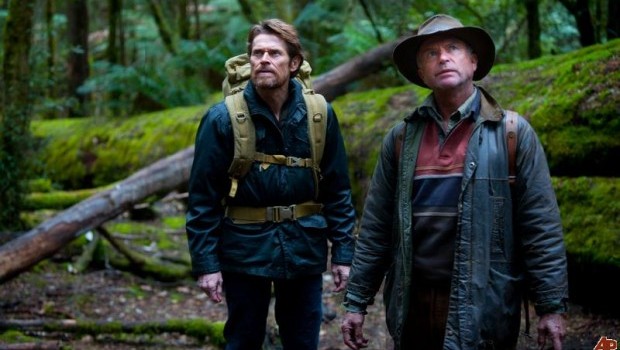By Zachary Smith
“The Hunter” tells the story of a skilled mercenary sent to Australia to venture deep into the Tasmanian Wilderness in search of species said to be extinct.
Martin David, played by Willem Defoe, is hired by a military biotech company Red Leaf to hunt and kill every last remaining Tasmanian Tiger and gather the DNA in order to ensure no competing company can infringe. The pressure for David to succeed is extreme as he later learns the tiger’s genetic code holds the secret to a dangerous biological poison.
Upon arrival in Tasmania, David poses as a scientist and lives with a family whose father has gone missing. As his search for the Tasmanian Tiger presses on throughout the film, David grows closer to the family, but as his attachment to the family grows, David and the family must face grave complications and extreme dangers.
Altercations with locals and pressures from Red Leaf make David’s job much more difficult, and the growing bonds he creates with the local family
The film dismantles the concept of a hunter and its prey. Sabotaged traps and ominous gunshots convince David to believe he is no longer alone on his excursions. After starting the movie as the hunter, David quickly becomes the hunted, the prey. In doing so, David’s journeys become increasingly edgy, and the viewer is left guessing what his next move will be and whether David will end up successful or dead.
The film also does a great job of using the Tasmanian Tiger for a greater purpose. The Tasmanian Tiger appears to be a symbol for something lost. David, a wiry and tactical hitman, appears to have lost all sense of emotion or love for others in his line of work. As the story develops, David becomes increasingly humanized and detached from his cold and heartless occupation. After his encounters with the family in Tasmania, he seems to have gained his ability to love again, which is parallel to his capture of the animal he was sent to obtain.
Defoe plays his role very well. His loner tendencies and wickedly dangerous yet awesome death instruments make for a great assassin. His weathered appearance both inside and out stick with the audience, and with each journey into the wilderness, his rugged body seemingly begins to mold into the landscape and Defoe’s character becomes a part of the beautiful and treacherous world that he is exploring.
The cinematography captures the beEvery natural piece of audio in the film also adds to the realism and beauty associated with the wilderness. Every rustling bush, every snapped twig, every footstep, every thunderclap, every rushing flow of water and every animalistic chirp or squawk was heard in its most natural form. There are few movies that boast the same exquisite audio production.
Director Daniel Nettheim scored big with this movie in my eyes, and I believe he challenges viewers to consider what needs to be discovered in their lives, all while providing us with a top-notch motion picture.








